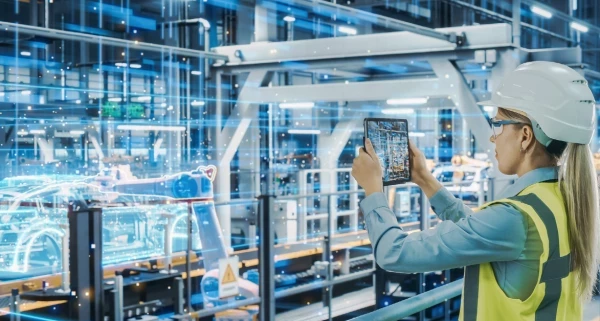Intelligent Automation: what does the future hold?
How is Intelligent Automation being used now, and how might it shape the future? A new report offers some tantalizing hints.
Add bookmark
The way that people are talking, writing and thinking about Intelligent Automation is changing; IA is moving on from being a novelty and starting to become part of everyday reality for businesses of every size, around the world.
But what does the future hold? A new report gives a few hints to the terrain we can expect to be crossing in the near future.
Implementation
Automation is going to be more common and ubiquitous - and the flexibility of the technology is part of what makes the future difficult to predict: it has the ability to touch and transform so many industries, and respond to so many different problems, that RPA and IA are able to adapt themselves to a business rather than forcing a round problem into a square solution.
And just as the benefits of IA will depend on their specific uses, obstacles to implementation are going to differ according to the individual circumstances of the business concerned. Younger businesses - or those with younger workforces - may find they don't have the cultural issues that longer-established businesses have, though they may find that established organisations are more robust, able to manage change better and have more resources for things like research and development.
This robustness may prove to be a deciding factor; whilst agility and flexibility are big advantages in a rapidly changing world, the ability to dig deep when a broadside hits is not to be underestimated. And in a discipline that’s developing rapidly, new ideas can mean the obsolescence of the old ones - with potentially devastating speed. Businesses that don’t invest wisely - or with the benefit of a crystal ball - need to be able to cope with a sudden need to upgrade, change tack and make decisions.
What might these changes look like?
Trends
The RPA and IA drum is being loudly beaten by traditional Finance and Administrative services, understandably. These areas are both clear candidates for the sorts of easy wins promised by RPA. But like any new technology, when it becomes more quotidian and the price starts dropping, the people using it for one thing may soon wonder if it can be put to work elsewhere, and it begins to creep into other parts of the business.
HR, for example, includes a lot of manual work, and while the non-standard nature of the processes may be an issue now, it’s going to become less and less of a problem as the technology gets smarter. The advantage of automating tasks made complex by legal issues is that robots always obey the rules. This is just one example of how a business might start to use robots for driving down costs and increasing efficiency, and quickly find that they are just as good at mitigating losses and avoiding expensive expert advice when things go wrong - by getting things right the first time.
Attitudes
Businesses are looking for efficiency, effectiveness and cost reduction - and IA is delivering it in unexpected ways. Every organisation seems to be aiming for the same destination, yet each is taking its own route. As with truly disruptive technologies, businesses are no longer entities in themselves; as part of a wider ecosystem, how a company uses automation will depend as much on how their competitors are using it as any other factor.
Any organisation that begins using IA has to understand what they are doing, and how the technology can make a specific difference to them. It’s simply unrealistic to replicate another business’s success exactly, and the future may well belong to those who want to explore, discover and pioneer technology in a way that’s right for them, rather than copy what’s working for somebody else. Not only are we in a situation where one size cannot fit all, the possibility is that what looks like a jacket to one company will be a pair of socks to another.
Many businesses are in the position of exploring new uses for their robot co-workers, and we will quickly find that the future for machines is not confined to number crunching. If wave one of IA has swept in with efficiency gains and cost savings, wave two will include the applications for technology forged in the hot crucible of hands-on real world experience. What will that look like? You will know when you have invented it.
Intelligent Automation Week runs from December 3 to 6 at AT&T Executive Education & Conference Center, Austin, Texas.



















